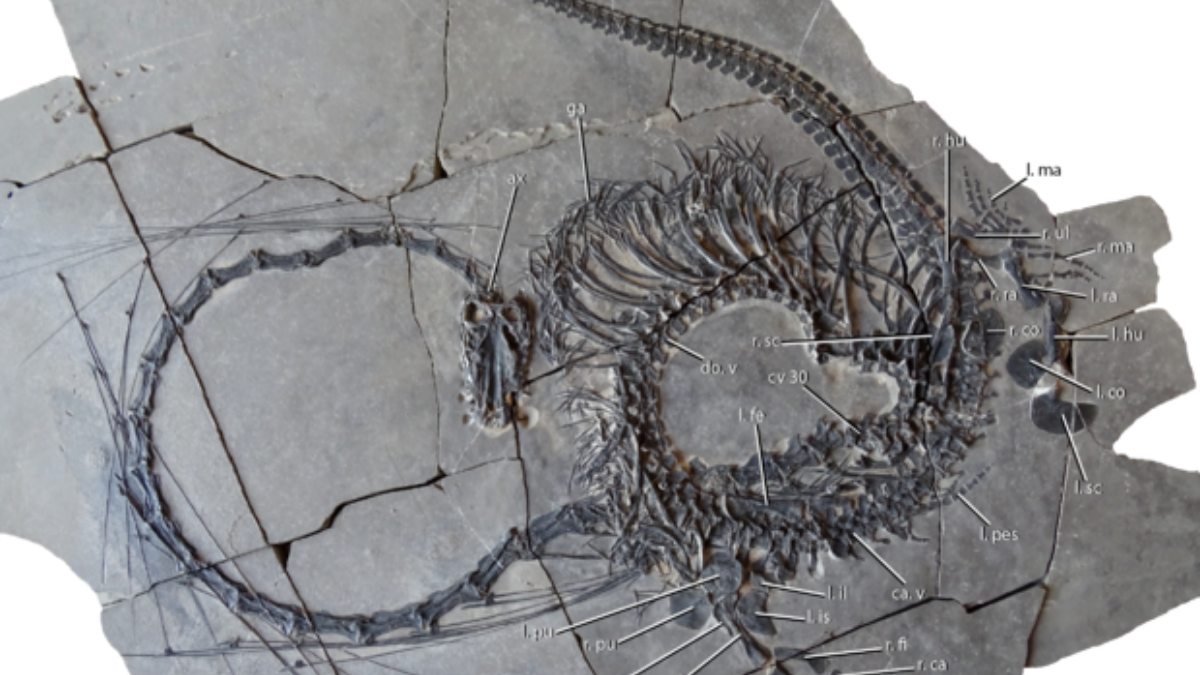A team of international scientists has made a groundbreaking discovery in China, unearthing fossils dating back 240 million years to the Triassic period. Among these ancient remains is a 16-foot-long aquatic reptile, dubbed Dinocephalosaurus orientalis, which boasts a remarkable 32 neck vertebrae, giving it an extraordinarily long neck.
Described as resembling a “long and snake-like, mythical Chinese dragon” by one scientist, the fossil was found in the Guizhou Province of southern China. While the creature was first identified in 2003 based on its skull, this recent discovery provides a more complete picture, allowing scientists to envision the bizarre long-necked creature in its entirety for the first time.
The findings, announced by the National Museums of Scotland, shed light on the creature’s aquatic lifestyle, suggesting it likely lived predominantly in water and may not have needed to venture onto land to lay eggs. The fossil, along with two previously discovered embryos of similar creatures, has provided valuable insights into this ancient species.
Despite a missing tail, the fossilized remains include a well-preserved skull, vertebrae, ribs, and limbs, offering researchers a glimpse into the anatomy and habits of Dinocephalosaurus orientalis. Notably, the discovery also revealed at least four fish inside the creature’s abdomen, along with small vertebrae and a possible limb bone, indicating its diet and ecological interactions.
Over a decade of research involving scientists from the United States, United Kingdom, China, and Europe has contributed to unraveling the mysteries surrounding this ancient reptile. Professor Li Chun from the Institute of Vertebrate Palaeontology and Palaeoanthropology expressed that among the extraordinary finds in Guizhou Province, Dinocephalosaurus stands out as particularly remarkable.






